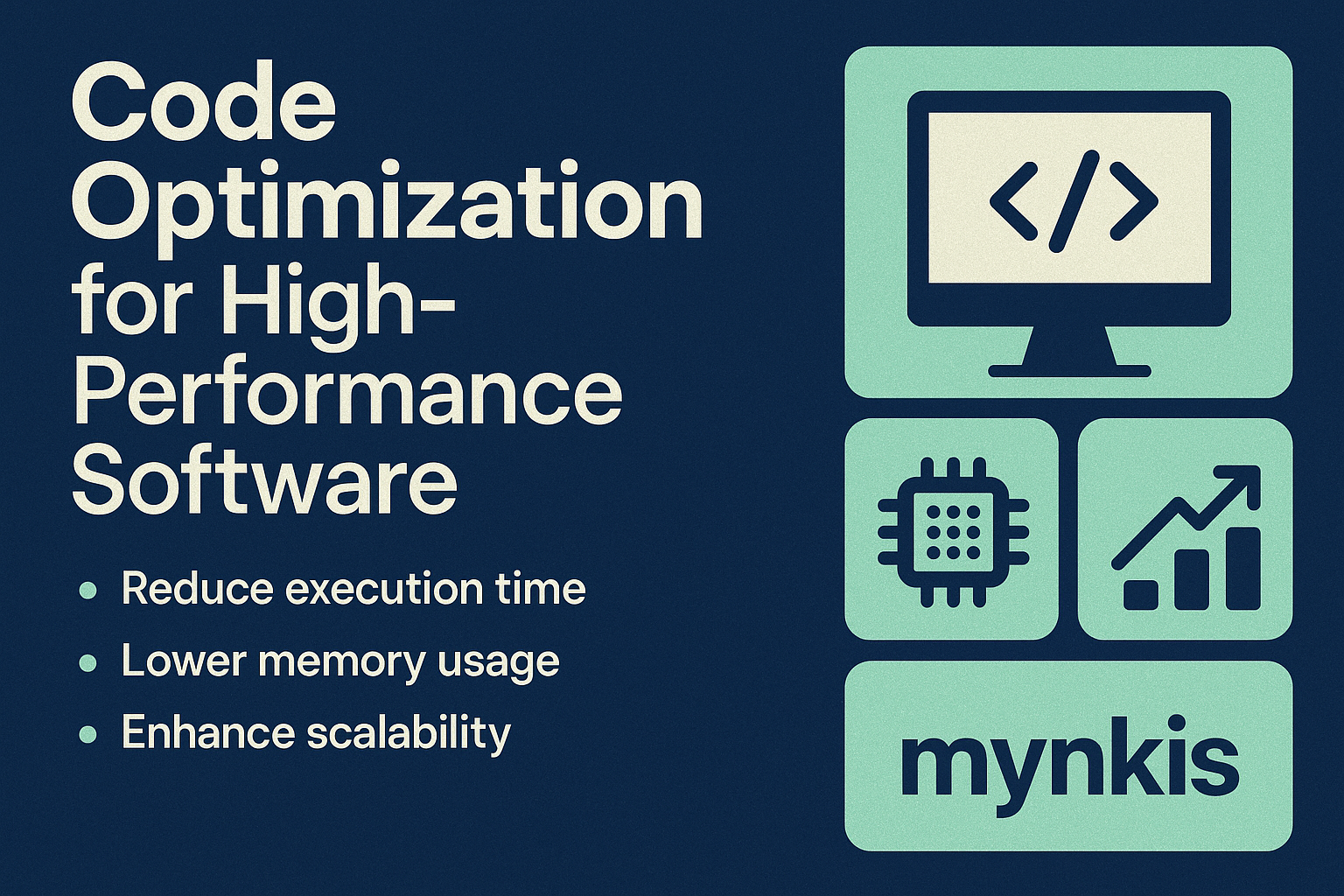Schedule a Demo
Code optimization isn't just a technical nicety; it's an essential aspect of building high-performance software. In an era where speed and efficiency can make or break an application, understanding how to streamline your code is crucial. For a small business stepping into the online space, ensuring your website runs at optimal performance can significantly impact user experience, conversion rates, and overall growth.
At its core, code optimization aims to improve the efficiency of software. This can involve reducing computational resources, speeding up processing times, or enhancing overall functionality. Whether it’s eliminating unnecessary loops, reducing code redundancy, or improving data structures, every small step towards optimization can result in substantial performance gains.
One effective method for speeding up your site is through minification and compression of code. Minification involves removing all unnecessary characters from your source code without changing its functionality, such as comments, new line characters, and whitespace. Similarly, compression techniques like Gzip can significantly reduce the size of your files, allowing for quicker downloads. For a business owner aiming to enhance their website's loading speed, applying these techniques can make a noticeable difference in user satisfaction.
If your business’s website relies on database interactions, optimizing these queries can lead to substantial performance boosts. Poorly constructed queries can slow down your website's responsiveness, leading to an unpleasant user experience. Consider indexing key fields, avoiding unnecessary joins, and limiting the data returned to only what’s required. A more efficient database can mean faster load times and a smoother browsing experience for your clients.
Caching is another powerful tool in the code optimization arsenal. By storing frequently accessed data in memory (caching), your site can return results much faster. Strategies like browser caching, server-side caching, and content delivery networks (CDNs) can all play pivotal roles in ensuring your website operates at peak performance. For any business aiming to establish a robust online presence, understanding and implementing these caching methods can greatly improve site speed and user retention.
Asynchronous loading allows parts of your website to load independently, ensuring the critical components load first. This approach is particularly useful for resource-heavy elements like scripts or images, preventing them from blocking the main content of your site. By implementing asynchronous loading, you can create a seamless user experience, where visitors feel like they’re not waiting around for your site to fully load.
Staying updated with modern frameworks and libraries is essential for crafting high-performance code. Frameworks like React, Vue.js, or Angular offer optimized architectures and built-in tools that are perfect for new web projects. They often include performance enhancements out of the box, such as efficient state management or just-in-time compilation. When building your custom website, leveraging these modern technologies can give you a significant edge in delivering a fast and responsive site.
While achieving the highest level of performance is the goal, it's also crucial not to sacrifice code readability. Highly optimized code that is difficult to maintain can become a bottleneck in itself. As a business owner, you might not be in the coding trenches yourself, but understanding the value of balancing performance and maintainability can aid in working with your development team to build sustainable, scalable solutions.
Using browser developer tools is a direct and immediate way to identify performance bottlenecks. The audit tools in Google Chrome, for example, offer insights into what's slowing down your site. Regularly checking the performance metrics and acting on the data can guide your optimization efforts, ensuring you’re always working to improve user experience on your website.
With the majority of internet users accessing sites via mobile devices, ensuring your code is optimized for mobile is critical. This means adopting responsive design, optimizing touch interactions, and ensuring your site's content scales well on smaller screens. For an entrepreneur whose audience might be on-the-go, catering to mobile users will not only boost performance but also improve overall user engagement and SEO ranking.
If code optimization seems out of your realm as a business owner, consider forging a strong working relationship with your development team. Communicating your goals and expectations around performance can help developers tailor their approach. Moreover, ongoing collaboration ensures that the optimizations implemented actually serve the interests of your business and your clients.
Performance optimization should also adhere to ethical standards. It's not just about shaving milliseconds off your load times; it’s also about maintaining transparency, respecting user data, and ensuring your site remains accessible to everyone, including those with disabilities. Aligning optimization efforts with ethical considerations can bolster your brand's reputation and demonstrate to clients that you care about more than just speed.
Finally, it's vital to measure the impact of your optimization efforts. Tools like Google Analytics or dedicated performance monitoring services can provide invaluable data on how well your site is performing. Additionally, seeking direct feedback from users can give you qualitative insights into the user experience. For any business owner intent on growth, continuous monitoring and iterative optimization will be key to staying competitive.
